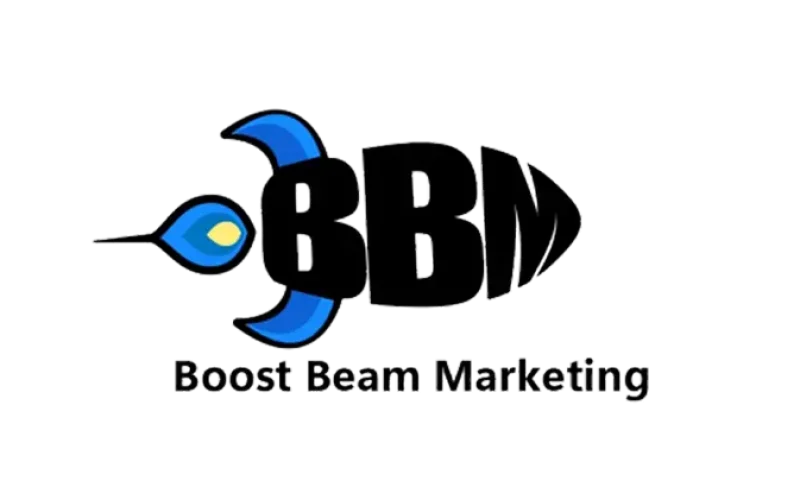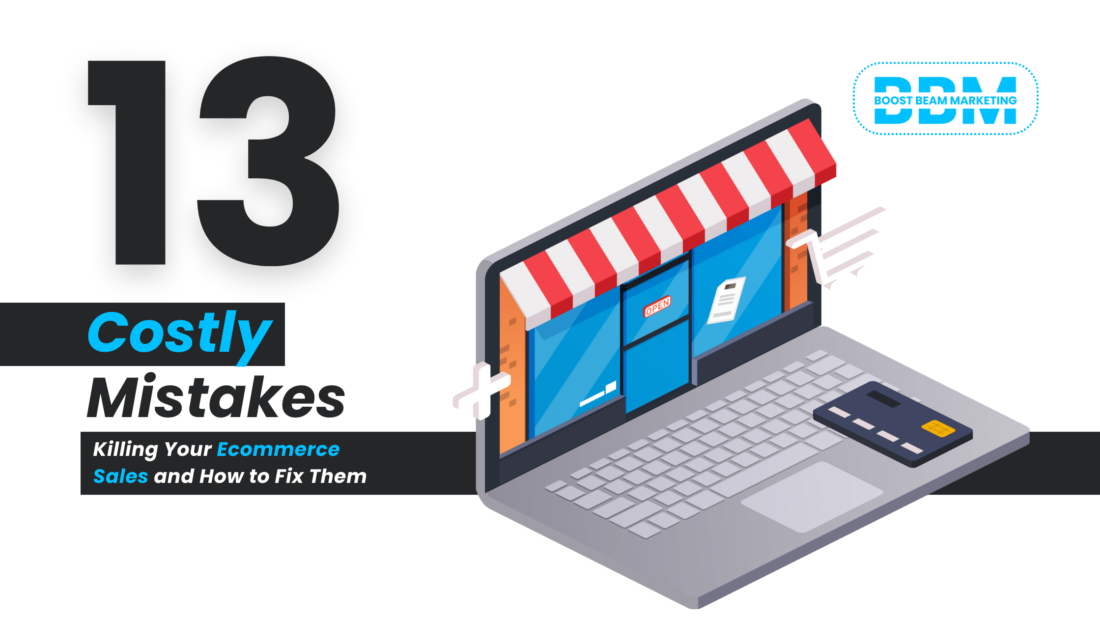Running a successful e-commerce store requires more than setting up a website and listing products. It involves implementing effective marketing strategies to attract customers, boost sales, and achieve your business goals. However, many new e-commerce businesses fall victim to e-commerce marketing mistakes that affect their growth and profitability. In this article, we will explore 13 of these mistakes and provide actionable tips on how to avoid them. By understanding and avoiding these blunders, you can optimize your e-commerce marketing efforts and drive success for your online store.
1. Not Knowing Your Target Audience
One of the most crucial aspects of any marketing strategy is understanding your target audience. Without a clear understanding of who your potential customers are, it becomes difficult to create targeted campaigns that resonate with them. Many ecommerce businesses make the mistake of trying to attract a broad audience, which often leads to low conversion rates and ineffective marketing efforts. To avoid this, take the time to define your buyer personas and identify their needs, preferences, and pain points. This will enable you to tailor your marketing messages and strategies to attract the right audience and drive higher engagement and conversions.
2. Ignoring the Importance of Average Order Value
Focusing solely on increasing sales volume without considering the average order value can be a costly mistake for e-commerce businesses. By neglecting to encourage customers to increase their purchases, you miss out on opportunities to maximize revenue. Instead of solely focusing on attracting new customers, also concentrate on increasing the average order value of your existing customers. Implement strategies such as product recommendations, bundling options, setting order minimums, and upselling to entice customers to spend more. This can significantly impact your profitability and overall business success.
3. Underutilizing Social Proof
Social proof plays a vital role in building trust and credibility for your e-commerce store. Many businesses make the mistake of disregarding social proof elements, such as customer reviews, testimonials, and referrals. These elements provide potential customers with the reassurance they need to make a purchase. Incorporate social proof throughout your website, including product pages, by showcasing positive reviews, testimonials, and user-generated content. Leverage social media platforms to encourage customers to share their experiences with your products and brand. By utilizing social proof effectively, you can enhance customer trust and boost conversion rates.
4. Choosing the Wrong CMS
The content management system (CMS) you choose for your e-commerce store can significantly impact your website’s performance and user experience. Opting for a cheap or inadequate CMS can lead to limitations in customization, scalability, and integration with other software. It’s essential to select a CMS that aligns with your business needs, provides flexibility for growth, and integrates seamlessly with your marketing automation tools. Investing in a robust and user-friendly CMS will ensure a smooth and efficient e-commerce operation, ultimately enhancing the overall customer experience.
5. Neglecting Compelling Product Descriptions
Product descriptions are more than just a list of features; they are an opportunity to engage and persuade your customers. Unfortunately, many ecommerce businesses fall into the trap of providing generic or uninspiring product descriptions. To avoid this mistake, focus on creating descriptive and persuasive content that highlights the benefits and value of your products. Use storytelling techniques to evoke emotions and help customers envision how the product can enhance their lives. Additionally, optimize your product descriptions for search engines to improve visibility and attract organic traffic.
6. Overlooking the User Experience
The user experience (UX) is a critical factor in the success of your ecommerce store. Customers expect seamless navigation, intuitive design, and a frictionless checkout process. Neglecting the user experience can lead to high bounce rates, abandoned carts, and dissatisfied customers. Ensure your website is visually appealing, mobile-friendly, and easy to navigate. Optimize your website’s loading speed and streamline the checkout process to minimize cart abandonment. Furthermore, provide exceptional customer service to build trust and loyalty among your customers. Prioritizing the user experience will result in higher customer satisfaction, improved conversion rates, and increased sales.
7. Inadequate Social Media Strategy
Social media platforms provide an excellent opportunity to connect with your target audience and promote your ecommerce store. However, many businesses make the mistake of having a weak or inconsistent social media strategy. To avoid this, develop a comprehensive social media plan that aligns with your business goals and target audience. Identify the most relevant platforms for your niche and create engaging content that resonates with your followers. Use social media ads, influencer collaborations, and user-generated content to expand your reach and drive traffic to your website. Consistency and authenticity are key in building a strong social media presence for your ecommerce store.
8. Lack of Intentionality in Marketing Efforts
Successful ecommerce marketing requires a well-thought-out and intentional approach. Neglecting to develop a clear marketing strategy can lead to ineffective campaigns and missed opportunities. Take the time to plan and implement a cohesive marketing plan that incorporates various channels, such as email marketing, social media, SEO, and content marketing. Leverage marketing automation tools to streamline your efforts and personalize your messaging. Regularly analyze and optimize your marketing campaigns based on data to ensure continuous improvement and maximize your return on investment.
9. Overthinking Minor Details
While attention to detail is important, overthinking minor aspects can hinder your progress and slow down your ecommerce growth. It’s easy to get caught up in perfectionism and spend excessive time on insignificant details. Instead, focus on the bigger picture and prioritize essential tasks that drive results. Take calculated risks, make data-driven decisions, and iterate as you go. Remember, ecommerce success is a journey, and it’s important to keep moving forward rather than getting stuck on minor details.
10. Failure to Analyze Data
Data analysis is crucial for understanding the effectiveness of your ecommerce marketing efforts. Many businesses make the mistake of neglecting to analyze and interpret their data, leading to missed opportunities and ineffective strategies. Regularly review key metrics such as website traffic, conversion rates, customer acquisition costs, and customer behavior. Use analytics tools to gain insights into customer preferences, identify trends, and make data-driven decisions. By leveraging data effectively, you can optimize your marketing strategies, identify areas for improvement, and drive continuous growth for your ecommerce store.
11. Ineffective Lead Capturing
Not every visitor to your website will make an immediate purchase, but that doesn’t mean you can’t benefit from their visit. Many ecommerce businesses fail to implement effective lead capturing strategies, missing out on valuable opportunities to nurture potential customers. To address this, incorporate subtle and non-intrusive lead capturing methods throughout your website. Offer incentives such as exclusive discounts, free resources, or newsletter subscriptions in exchange for contact information. This allows you to build a database of potential leads for future marketing efforts and remarketing campaigns.
12. Inadequate Targeting of the Right Audience
Targeting the wrong audience can waste your marketing budget and result in low conversion rates. It’s essential to refine your targeting strategies to reach the right audience for your ecommerce store. Conduct thorough market research to understand your target audience’s demographics, interests, and online behavior. Leverage tools like Google Analytics and social media insights to gather data and refine your targeting parameters. By precisely targeting your ideal customers, you can improve campaign performance, increase engagement, and drive higher conversions.
13. Disregarding Mobile Optimization
With the increasing usage of mobile devices for online shopping, optimizing your e-commerce store for mobile is no longer optional. Ignoring mobile optimization can lead to a poor user experience, high bounce rates, and missed sales opportunities.
Ensure your website is responsive and mobile-friendly, adapting seamlessly to different screen sizes and resolutions. Optimize page load speed for mobile devices, minimize the number of form fields, and simplify the checkout process for mobile users. Test your website on various mobile devices and regularly monitor mobile analytics to identify and address any issues.
Conclusion
Avoiding common ecommerce marketing mistakes is crucial for the success of your online store. By understanding the importance of knowing your target audience, optimizing the average order value, utilizing social proof, choosing the right CMS, creating compelling product descriptions, prioritizing the user experience, implementing an effective social media strategy, being intentional in your marketing efforts, avoiding overthinking, analyzing data, capturing leads, and targeting the right audience, you can optimize your ecommerce marketing strategies and drive growth for your business. Remember, continuous improvement and adaptation are key in the ever-evolving world of ecommerce marketing.
Page 1 of 3
Tired of making these costly mistakes?
Let Boost Beam Marketing’s ecommerce experts guide you to success.
Contact us today for a free consultation!


